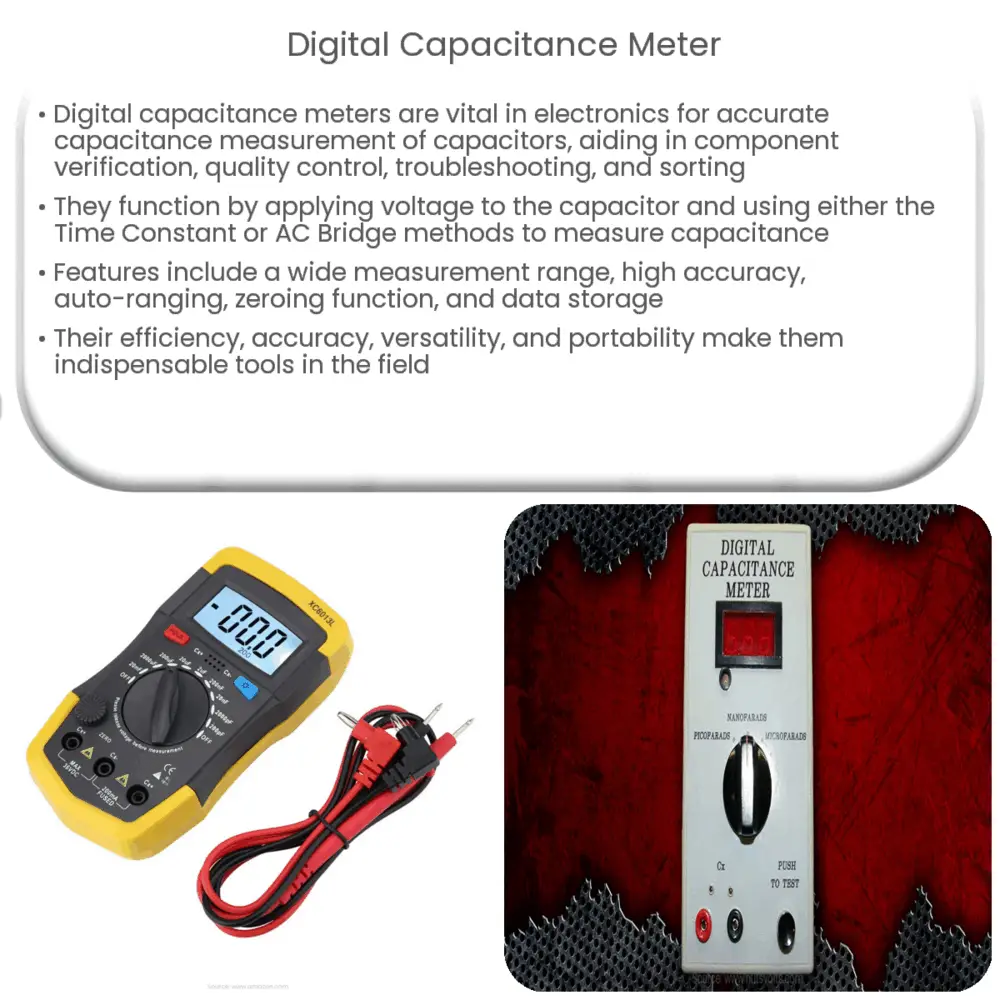Digital capacitance meters accurately measure capacitor values, aiding in component verification, quality control, and troubleshooting.

Digital Capacitance Meter: An Essential Tool for Modern Electronics
Introduction
In the world of electronics, accurate measurement of various components is crucial for the design, troubleshooting, and maintenance of electronic circuits. One such component that plays a vital role in the functioning of electronic devices is the capacitor. This article delves into the importance of digital capacitance meters, how they work, their key features, and benefits.
What is a Digital Capacitance Meter?
A digital capacitance meter, also known as a capacitance tester or capacitance checker, is an electronic device used to measure the capacitance of capacitors. Capacitance is the ability of a capacitor to store electrical energy when a voltage is applied across it. It is measured in units called farads (F), although most capacitors used in electronics have capacitance values in the range of picofarads (pF) to microfarads (μF).
Why is it Important to Measure Capacitance?
Measuring capacitance is essential for several reasons:
- Component Verification: Capacitance meters help verify if a capacitor’s actual value matches its specified value, ensuring that it functions correctly within a circuit.
- Quality Control: In manufacturing environments, capacitance meters are used to test capacitors for defects and deviations from specified values.
- Troubleshooting: When electronic devices malfunction, faulty capacitors are often the cause. Digital capacitance meters help identify these issues by measuring the capacitance of suspect capacitors.
- Component Sorting: Capacitance meters can be used to sort capacitors based on their values, making it easier for technicians to locate the correct components when assembling or repairing electronic devices.
How Does a Digital Capacitance Meter Work?
Digital capacitance meters function by applying a small voltage to the capacitor and measuring the resulting current to calculate its capacitance. The meter uses a microcontroller or digital signal processor (DSP) to perform the calculations and display the results on an LCD or LED screen. There are two common methods used to measure capacitance:
- Time Constant Method: This method involves charging and discharging the capacitor through a known resistor and measuring the time it takes for the voltage across the capacitor to reach a specific value. The time constant (RC) is used to determine the capacitance value.
- AC Bridge Method: In this method, an AC voltage is applied across a bridge circuit that includes the capacitor under test, a reference capacitor, and two resistors. The capacitance is calculated by comparing the voltage across the unknown capacitor with the reference capacitor.
Key Features of Digital Capacitance Meters
Digital capacitance meters offer several features that make them invaluable for working with capacitors. Some of these key features include:
- Wide Measurement Range: Digital capacitance meters can measure a broad range of capacitance values, typically from picofarads to millifarads, accommodating the vast majority of capacitors used in electronic circuits.
- High Accuracy and Resolution: Modern digital capacitance meters provide high accuracy and resolution, ensuring precise capacitance measurements for reliable results.
- Auto-Ranging: Auto-ranging functionality automatically selects the appropriate measurement range for the capacitor under test, simplifying the measurement process and reducing the risk of error.
- Zeroing Function: This feature allows the user to reset the meter’s reading to zero, effectively eliminating any residual capacitance that may be present in the test leads or meter itself.
- Data Hold and Storage: Some digital capacitance meters offer data hold and storage capabilities, allowing users to freeze a measurement on the display or store multiple readings for later analysis.
Benefits of Using a Digital Capacitance Meter
There are several benefits to using digital capacitance meters in the field of electronics:
- Efficiency: With their user-friendly design and auto-ranging capabilities, digital capacitance meters streamline the process of measuring capacitance, saving time and effort.
- Accuracy: Digital capacitance meters offer high accuracy and resolution, providing reliable measurements that are crucial for various applications, such as troubleshooting and component verification.
- Versatility: A wide measurement range accommodates the vast majority of capacitors found in electronic devices, making digital capacitance meters versatile tools for various tasks.
- Portability: Most digital capacitance meters are compact and lightweight, making them easy to transport and use in various settings, from the lab to the field.
Conclusion
Digital capacitance meters are essential tools for professionals and hobbyists working with electronic circuits. These devices offer high accuracy, ease of use, and a wide range of features that make them indispensable for measuring capacitance in various applications. By understanding the importance of capacitance measurement and how digital capacitance meters function, users can make informed decisions when selecting the right tool for their needs and ensure the optimal performance of electronic devices and circuits.

